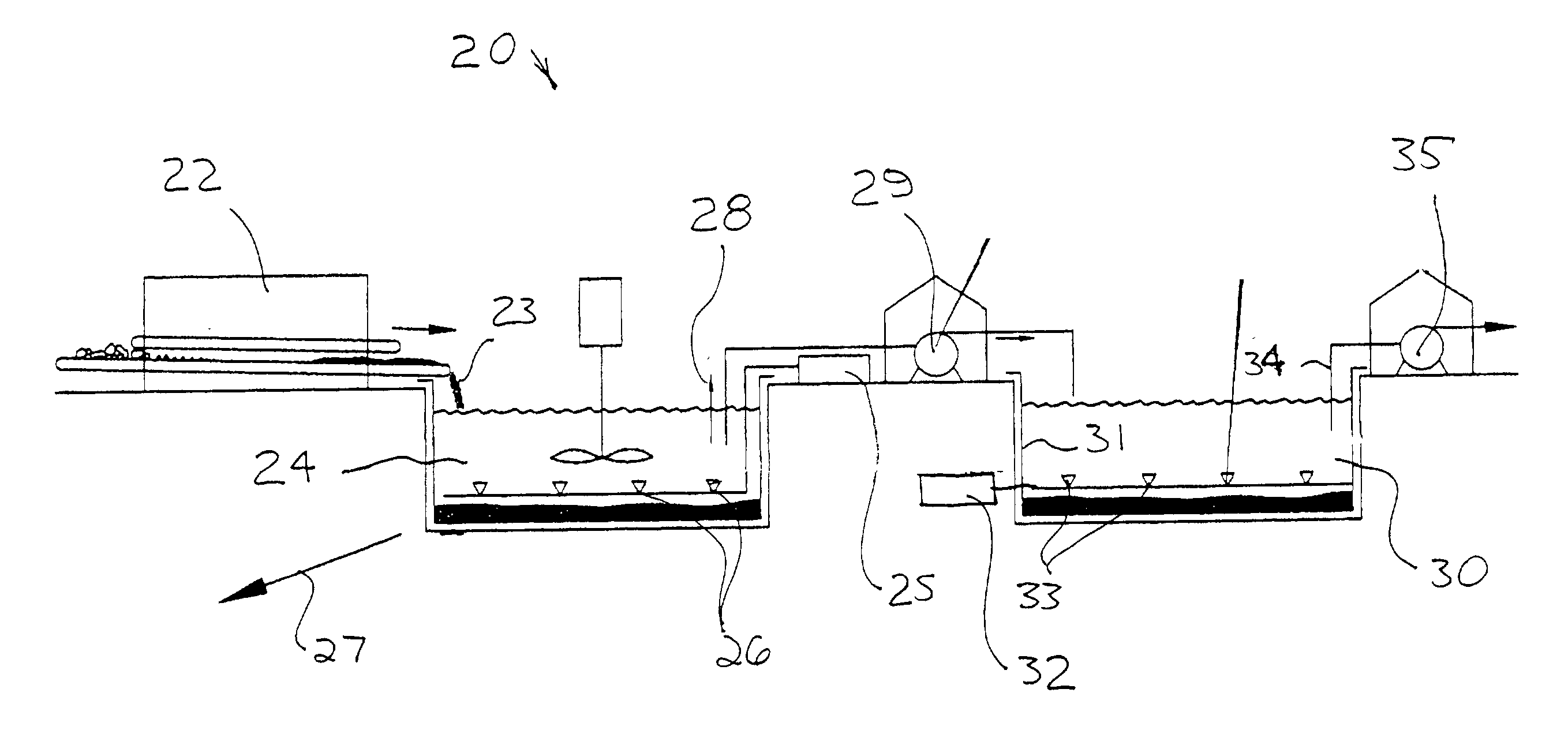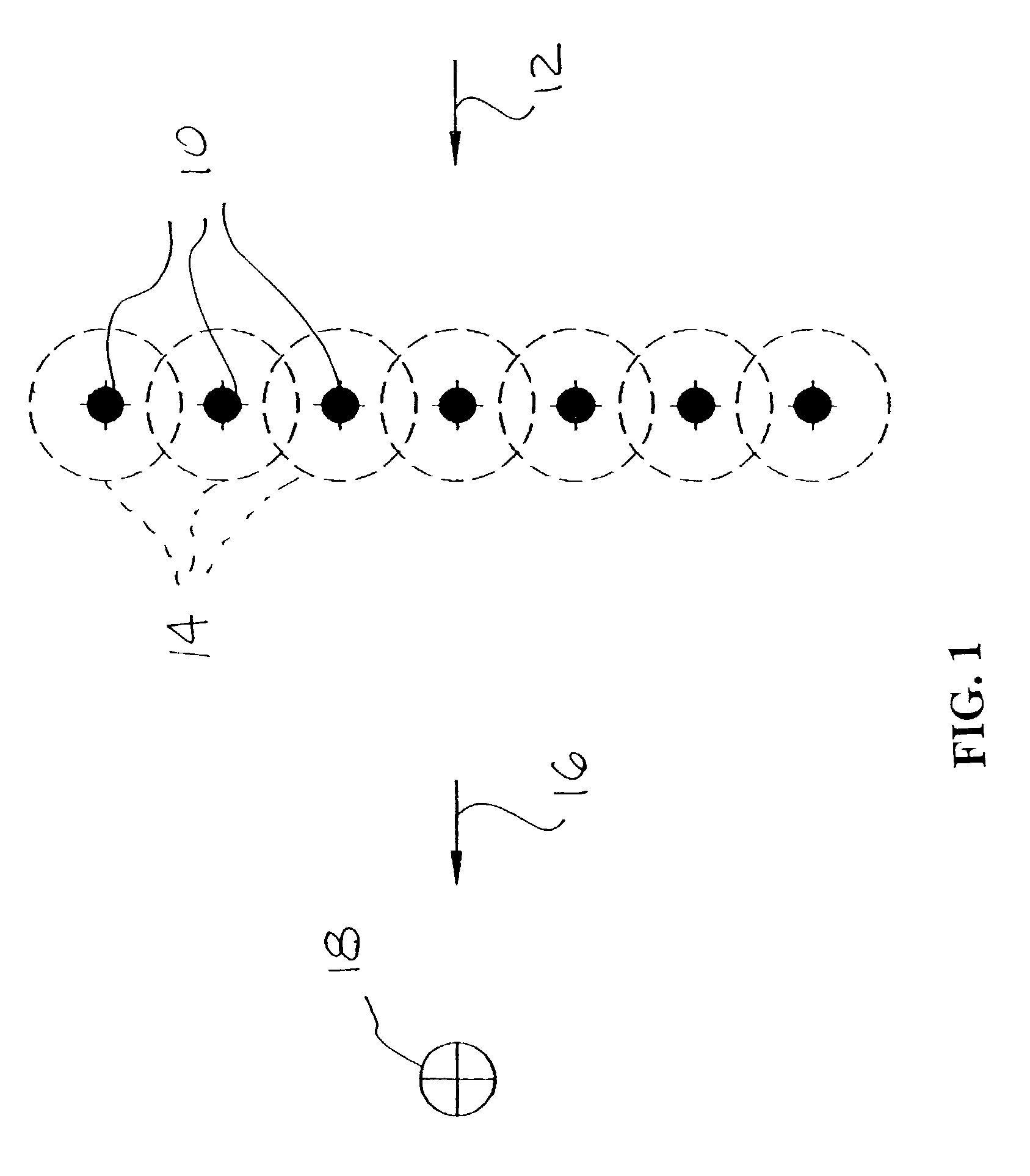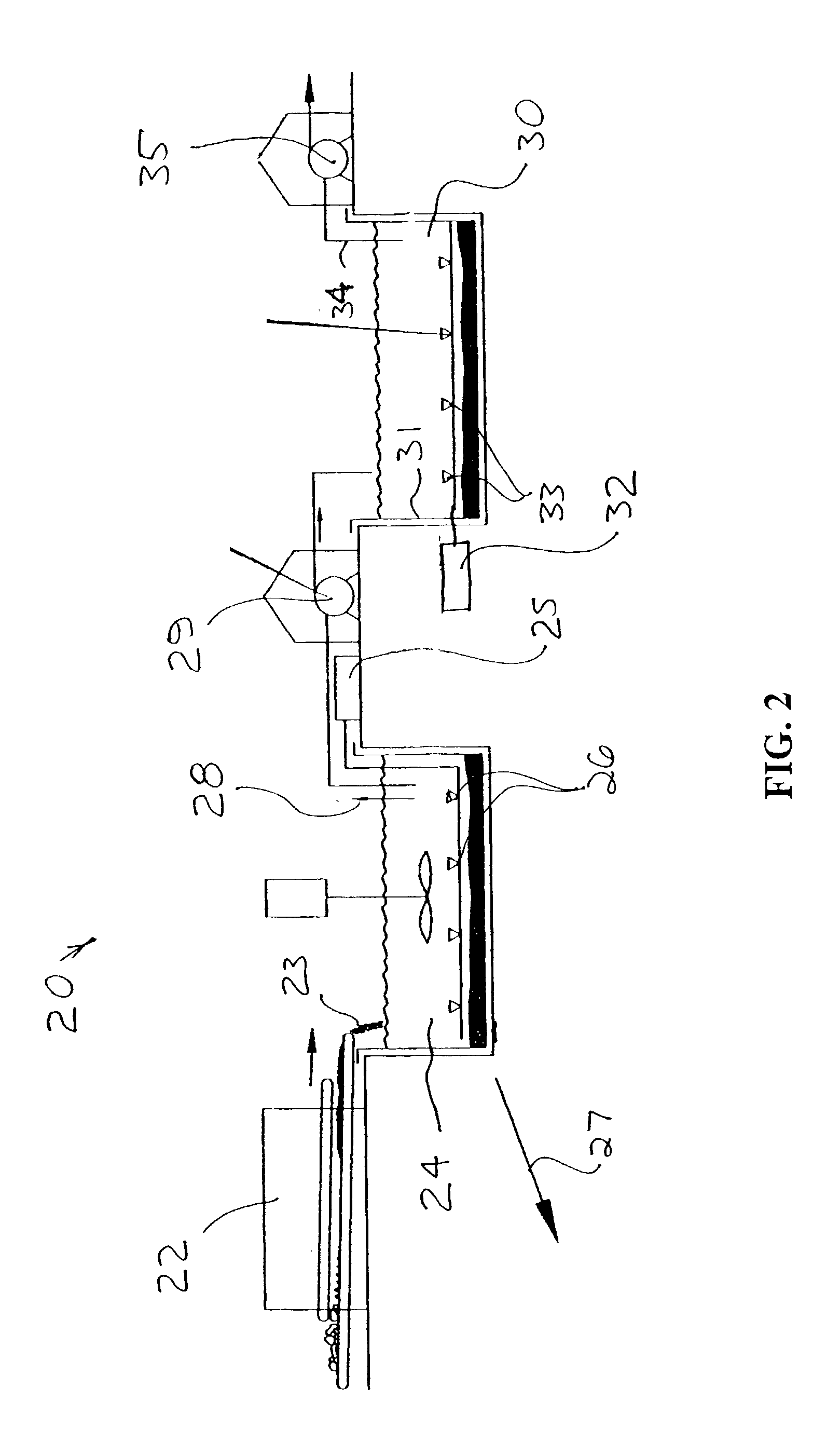Remediation of metal contaminants with hydrocarbon-utilizing bacteria
a technology of hydrocarbon-utilizing bacteria and metal contaminants, which is applied in biological water/sewage treatment, nuclear engineering, quary waste water treatment, etc., can solve the problems of high toxicity of arsenic trivalent inorganic compounds, high toxicities of arsenic trivalent compounds, and significant health hazards of surface water, groundwater and soil arsenic contamination,
- Summary
- Abstract
- Description
- Claims
- Application Information
AI Technical Summary
Problems solved by technology
Method used
Image
Examples
Embodiment Construction
[0079] A 4-liter sample of spent electroplating solution was collected from an industrial metal-plating facility. Prior to treatment with butane, one liter of the sample was submitted to a certified analytical laboratory for evaluation of the following parameters: pH; total cyanide; and total metals. The results of the characterization-sampling event are summarized in Table 2 below.
2 TABLE 2 Parameter Results pH 3.0 Total cyanide 0.08 mg / l Antimony <0.1 mg / l Arsenic <0.1 mg / l Beryllium 0.002 mg / l Cadmium <0.050 mg / l Chromium 1.34 mg / l Copper 0.16 mg / l Lead <0.04 mg / l Mercury <0.0005 mg / l Nickel 765 mg / l Selenium <0.2 mg / l Silver <0.20 mg / l Thallium <0.1 mg / l Zinc 3.10 mg / l mg / l = milligrams per liter
[0080] The spent electroplating solution had a pH of 3.0. In addition, the concentrations of cyanide, beryllium, chromium, copper, nickel and zinc were detected above the laboratory detection limits. Ideally, prior to treatment with butane, the sample should have been adjusted with an al...
PUM
| Property | Measurement | Unit |
|---|---|---|
| weight percent | aaaaa | aaaaa |
| weight percent | aaaaa | aaaaa |
| weight percent | aaaaa | aaaaa |
Abstract
Description
Claims
Application Information
 Login to View More
Login to View More - R&D
- Intellectual Property
- Life Sciences
- Materials
- Tech Scout
- Unparalleled Data Quality
- Higher Quality Content
- 60% Fewer Hallucinations
Browse by: Latest US Patents, China's latest patents, Technical Efficacy Thesaurus, Application Domain, Technology Topic, Popular Technical Reports.
© 2025 PatSnap. All rights reserved.Legal|Privacy policy|Modern Slavery Act Transparency Statement|Sitemap|About US| Contact US: help@patsnap.com



